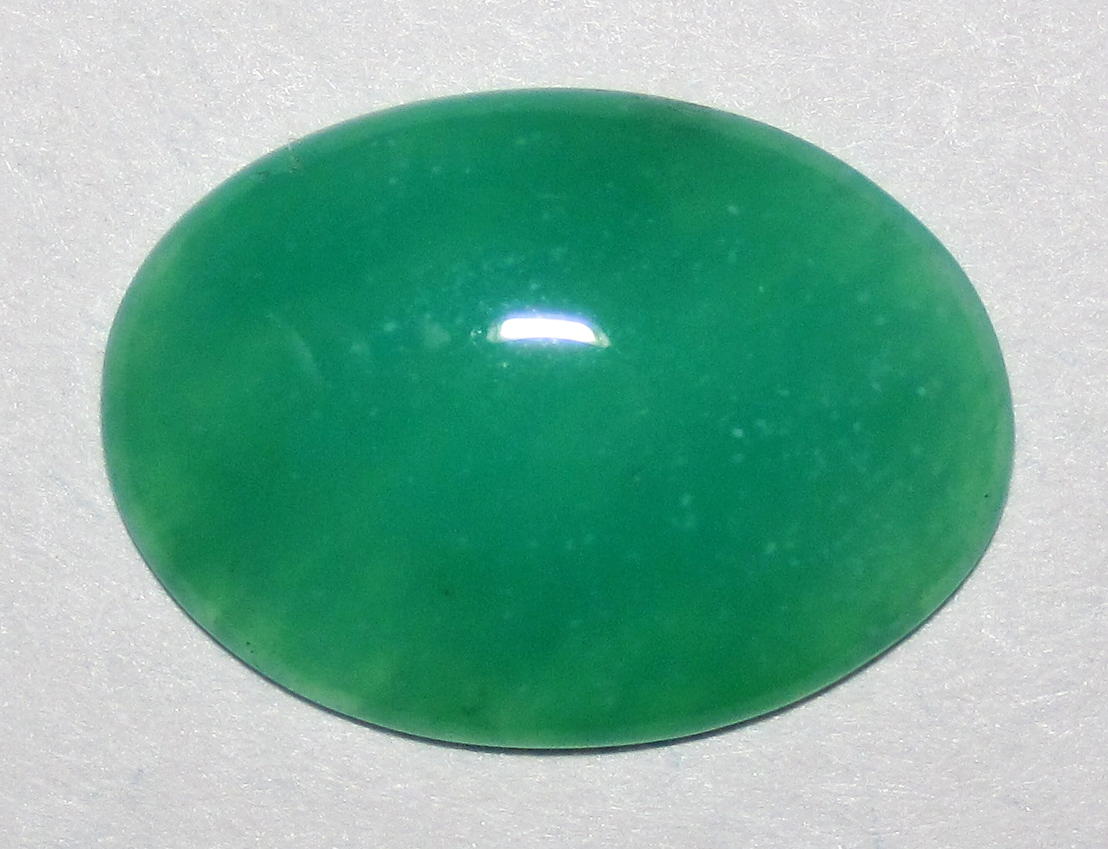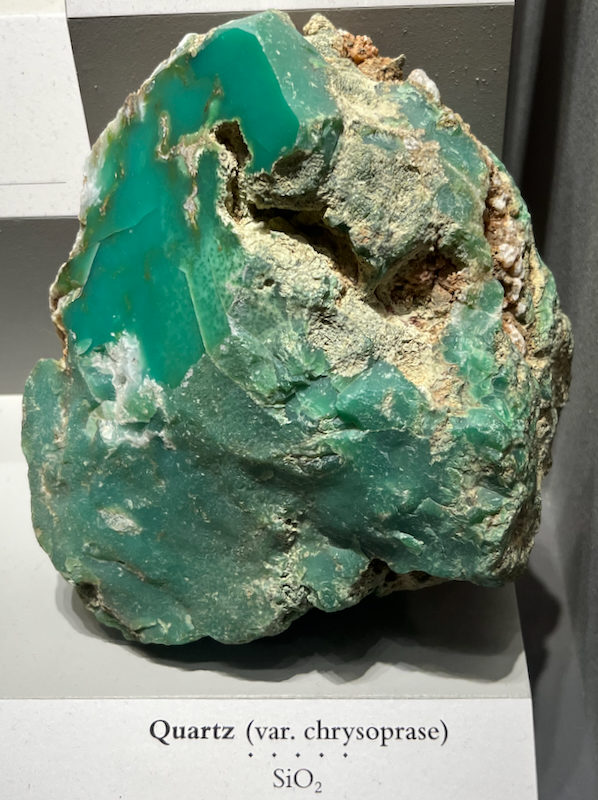Chrysoprase
Another example of plain old quartz that becomes valuable if you just add a little something, chrysoprase is a gemstone created when a small amount of nickel combines with quartz, producing a lovely milky green color. Specifically, like agate and others, chrysoprase is a type of chalcedony, which is a type of quartz. So what type of quartz is chalcedony? It’s “cryptocrystalline” quartz. When you look at a cryptocrystalline mineral like chrysoprase, you just see a smooth surface, not sharp-edged crystals. Chrysoprase usually forms by filling in cracks in rock, and it’s often found in a serpentine-related rock called serpentinite. If you find raw chrysoprase chunks in nature or at a mineral store or show, they’ll often have thin layers of rusty-colored rock on the bottom and top that contrasts with the green chrysoprase, and the color of those thin layers can be from iron in the surrounding serpentinite.
| Formula | Group or Type | Shape | Hardness | Specific Gravity | Streak | Luster |
|---|---|---|---|---|---|---|
| SiO2 | Quartz: Chalcedony | — | 7 | 2.6–2.7 | White | Waxy to dull |


